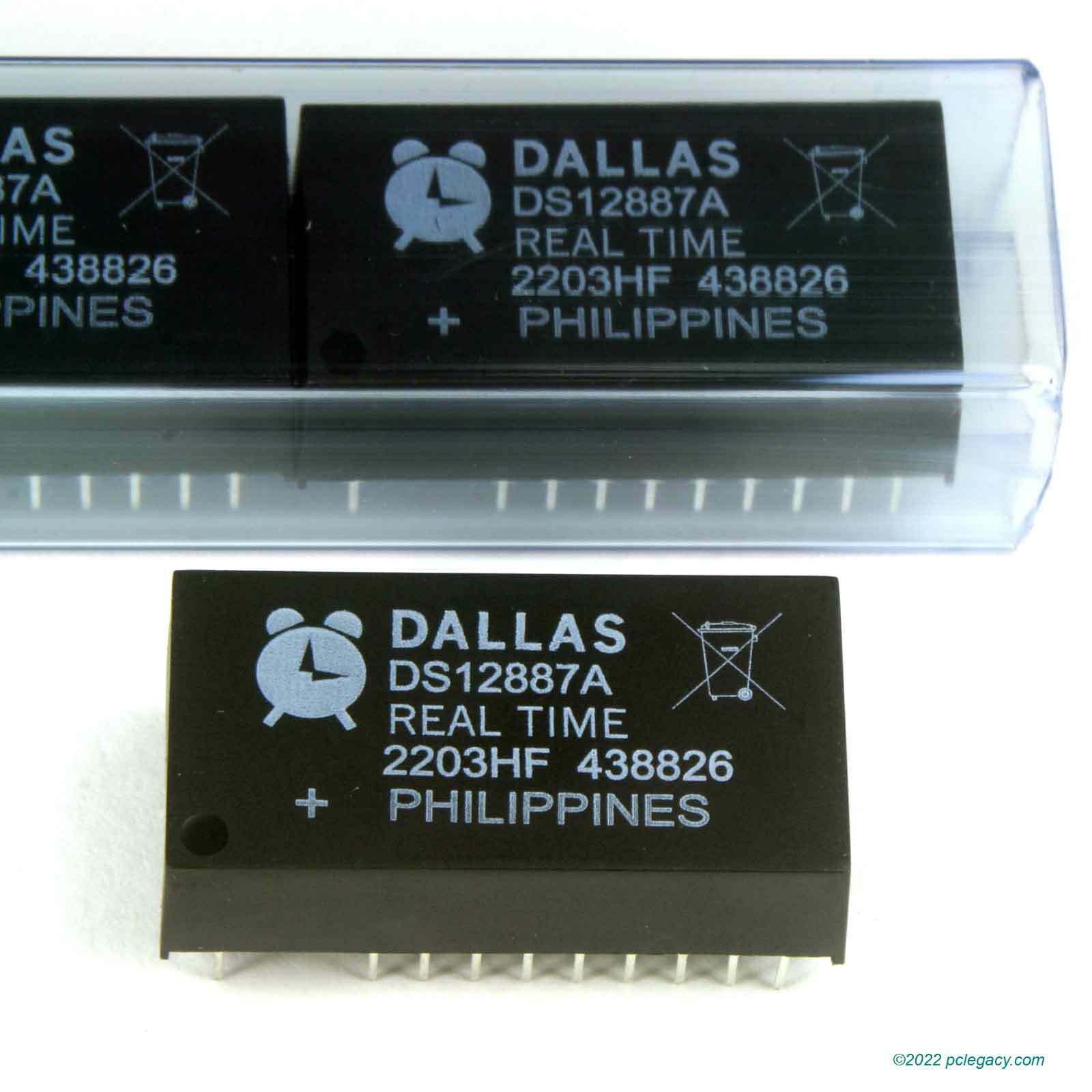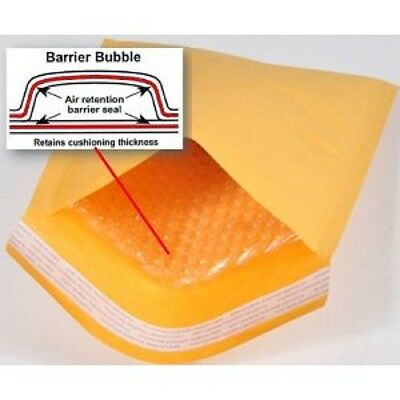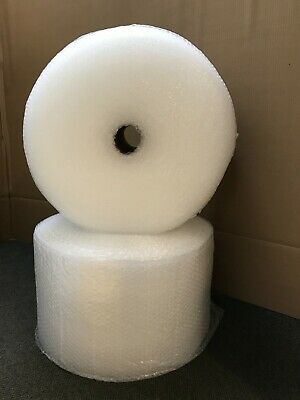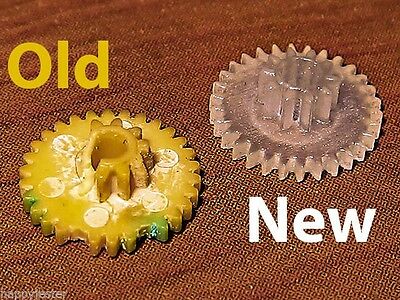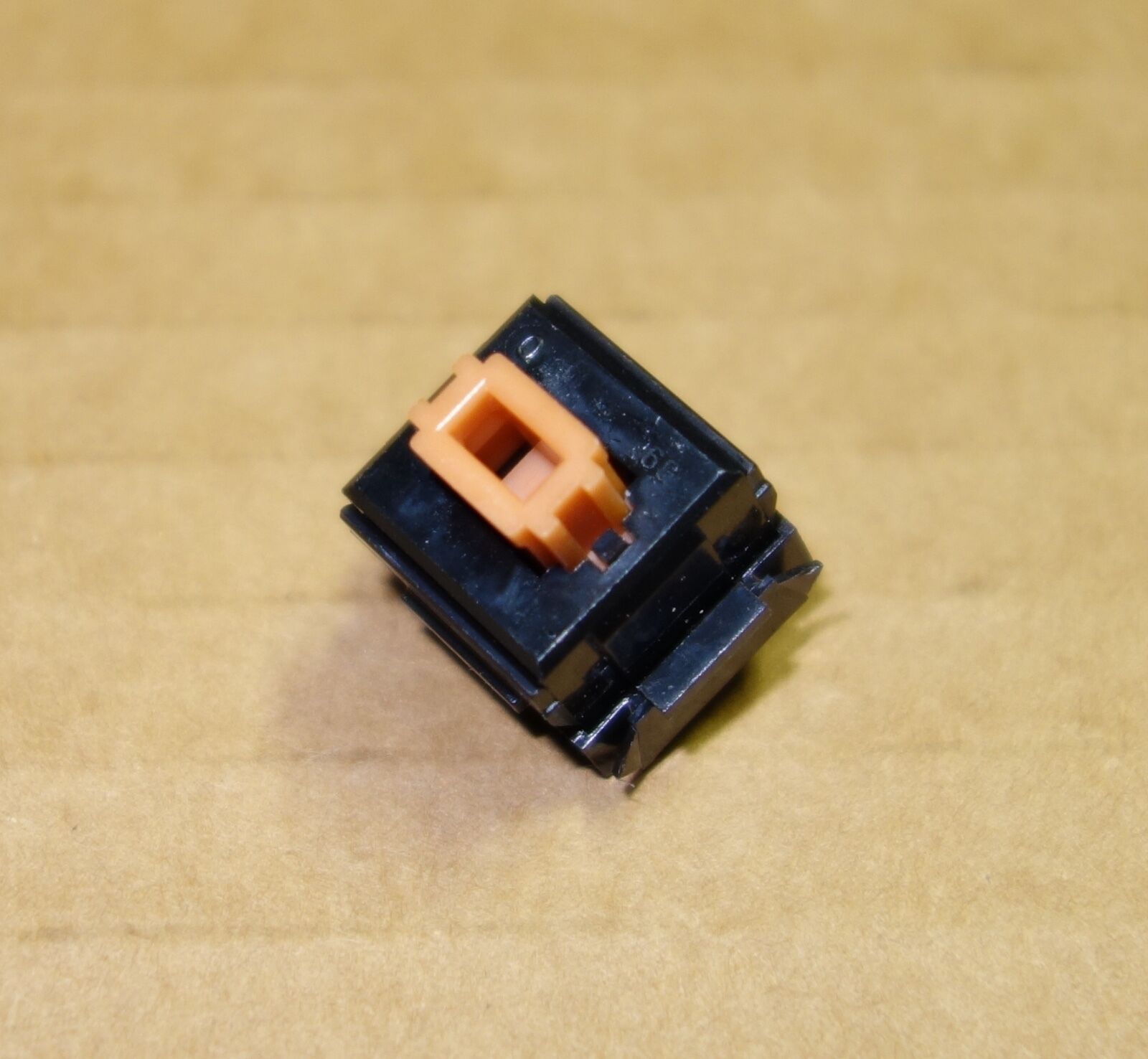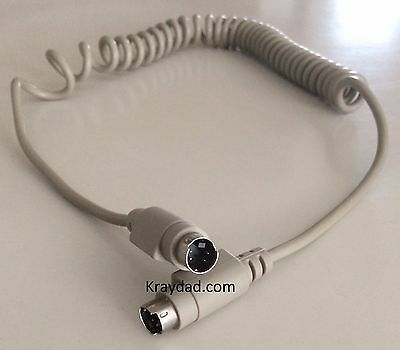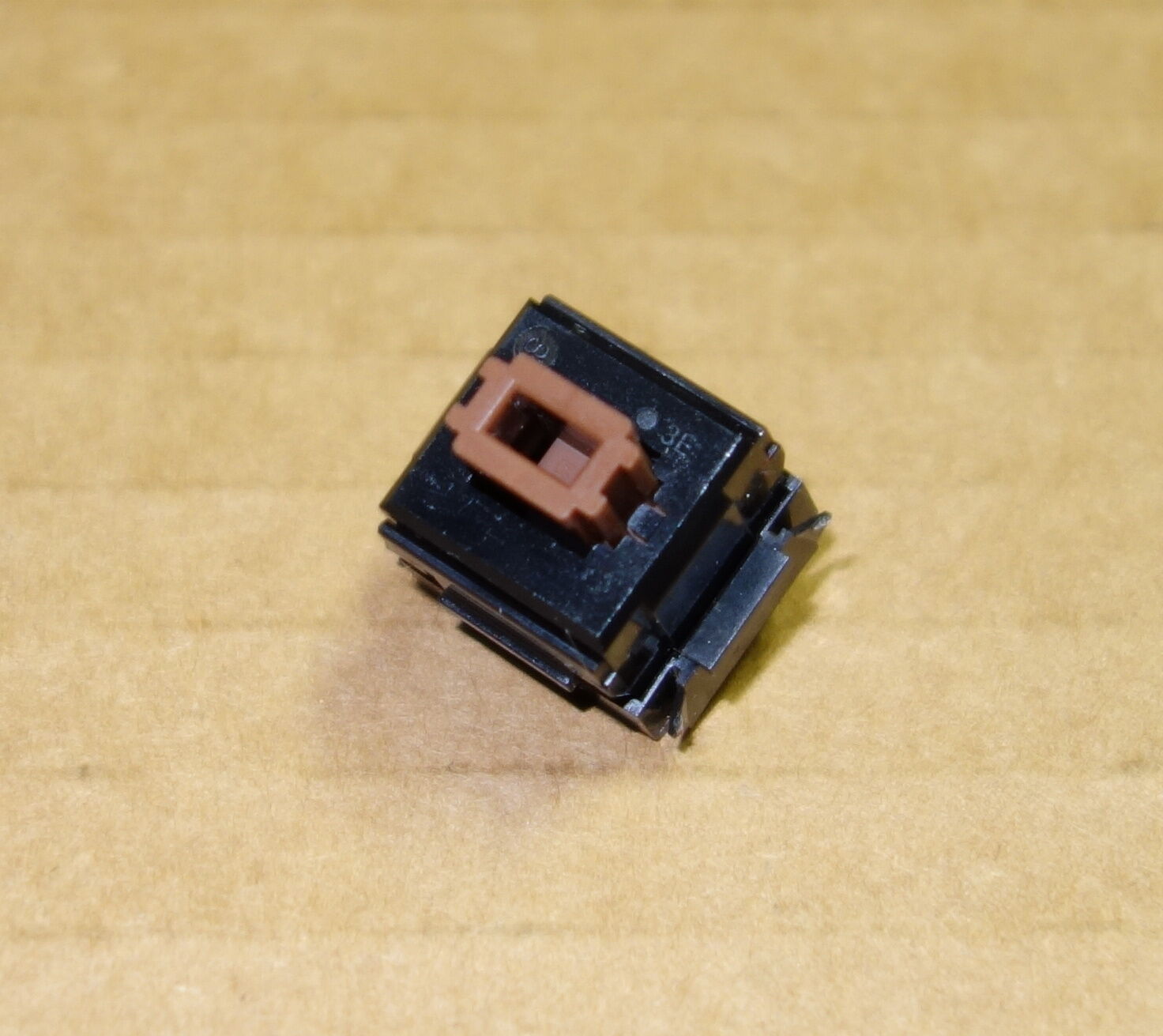-40%
Dallas DS12887A+ RTC — NEW 2022 — replaces DS1287, DS12887, DS12B887, DS12C887
$ 527.99
- Description
- Size Guide
Description
Untitled DocumentAmerican seller and eBay member for over 20 years.
— Awaiting new stock, currently on backorder —
(price will return to normal when back in stock)
This are the
Real Deal
!!!
Fresh
NEW
Dallas chips made just a few months ago!
These new batteries will still be running 10 to 20+ years from now!
Note: The cheap Dallas RTC chips you see are probably pulls made many years, even decades ago (no wonder they are so cheap) — if they aren't already dead when they arrive, they will be soon. Check the production date code (how to read the date code is detailed in a photo above).
Each purchase is for one RTC chip.
Currently shipping chips with 2203 date code as shown in the photos (freshly manufactured in the 3rd week of
2022
).
The Dallas DS12887A+ is an integration of a RTC (Real Time Clock) with a small amount of RAM dedicated to storing the clock data and another small amount of RAM designated for storing CMOS settings, plus a long-life lithium battery to keep it powered to maintain the clock and retain the data stored in RAM. This device was widely used on motherboards in the 1990's providing a nearly trouble-free solution to providing a clock function and storing CMOS data. The circuitry is extremely efficient, drawing very little current from the battery, allowing it an extremely long design life of 10+ years (often running for 15 to 20 years). The 10-20 year life is why a few of the original Dallas devices made in the 90's are still running. However, most have either already died, and any still running will certainly die soon.
All the circuitry, as well as the lithium battery, are encased in epoxy. The embedded batteries in the old chips have a finite life and cannot feasibly be replaced after they expire.
There are instructions on the Internet of how to hack into the epoxy casing to expose the inner connections and glue a holder and a new lithium coin cell on top, and it does work (I've done it), but it is a tedious and messy endeavor which requires proper tools and soldering skills. Unless you've got a lot of free time on your hands and just enjoy doing stuff like that, what's the point when a freshly manufactured replacement is available? Some people argue that once you've gone through this ordeal you will never have to worry about it again because you can just replace the lithium battery when it dies — But these new production Dallas RTC chips will run for the next 10 to 20 years, and if you're still running your vintage computer after that, THEN you might need to cut into its casing and hack the battery. Until then, enjoy the most practical solution of just replacing the expired device with a new one.
Be certain to orient the chip correctly when installing — there's a notch on the chip which matches the notch indication typically printed on the motherboard; pin 1 is indicated by a depression on top of the chip. Inserting the chip backwards or with the pins misaligned could instantly blow the chip, so be certain that you have it installed correctly before re-powering the motherboard. Of course, the motherboard must be fully powered down when replacing the chip. Note that ATX type motherboards are not fully powered down by the computer switch — the power supply must be unplugged.
NO RETURNS.
The chance that a device like this comes defective from the manufacturer is — almost never. Note that most motherboards will boot to the BIOS screen without valid clock and CMOS data, so installing this new Dallas RTC will typically not revive a dead motherboard (there are some exceptions). A CMOS or clock error reported by the BIOS, especially after the computer has been powered down, generally indicates that CMOS battery is dead and cannot preserve the clock or CMOS settings — replacing an old expired Dallas RTC/battery with this new one will probably cure that specific problem.
Shipped via fast USPS First Class Mail with full tracking.
Shipped from a USPS SCF (Sectional Center Facilty) so delivery anywhere within the U.S. is only a few days away (excluding the occasional USPS misdirect). We are lucky to have such a great national postal system and we need to protect it.
FAQ:
Q: Why are these more expensive than others that I see offered for sale?
A: Look at the date codes! Dallas batteries for sale cheap were probably made in the 1990's or early 2000's and are pulls from old motherboards. The ones listed as "NEW" may have never before been used, but the battery is still as old as the date code says and will expire during the same time frame. Would you call something manufactured 25 years ago "NEW," especially if it has a non-replaceable battery? Look at the date code!
Also, back in the 90's these Dallas RTC chips were mass produced not only by Dallas, but by other manufacturers such as ODIN and VIA, so prices in that era were very low. Production now is for a few limited applications with long production lead times, so the current prices are higher.
Q: Why are you able to offer new production of these devices?
A: I became an OEM computer manufacturer way back in 1984, purchasing components such as CPUs, motherboards, memory, etc, directly from the original manufacturers and I have kept my contacts within the computer industry. New production of these devices is limited and I don't know how long they will continue to be manufactured, so if you anticipate the need of new replacements — don't delay.
Q: What does the "A" in the DS12887
A
+ product code mean?
A: The "A" indicates that pin #21 is present (/RCLR), which triggers the chip's memory reset. If your motherboard has a "CMOS clear" jumper (as most do), shorting that jumper (while the motherboard is unpowered, of course) will short pin 21 of the Dallas battery to ground which clears (sets to logic 1) all of the general-purpose RAM in the Dallas battery, thereby clearing the CMOS data it has stored (RAM associated with the RTC is not affected). If your motherboard has a CMOS clear jumper, then you want this A version. An alternate scenario is for the CMOS data to be cleared only through software, in which case there is probably no electrical connection to pin 21. The DS12887 (without the A), is the same chip except pin 21 is absent. In worst case, if pin 21 causes a problem, just bend the pin up so it doesn't connect. For these reasons I have chosen the "A" version because it is universal, is required in most cases, and works in all situations.
Q: What does the "+" in the DS12887A
+
product code mean?
The plus designation indicates that the device is lead-free, therefore preventing this toxin from leaching into the environment. RoHS (Restriction of Hazardous Substances) restricted lead content in electronic products with compliance required after 2006. Therefore, if a Dallas RTC does not have the "+" indication, that's a solid guarantee that it was manufactured before 2006.
Q: What is the DS12
C
887 and can this replace it?
The "C" designation was a design change to make it Y2K compatible by taking one byte of the general memory to use as a century indicator so the RTC would do an automatic changeover from 1999 to 2000. Since it will be a long time before the next century hits us, that's nothing to worry about now and the "C" version is no longer made. This chip is a drop-in replacement for the discontinued DS12C887.
Q: What is the DS12
B
887, and can this replace it?
A: I have not run across the "B" version and cannot identify any differences, but this is what the manufacturer says: "The DS12B887 Real Time Clock was obsoleted over 16 years ago. The best alternative for the DS12B887 is the DS12887A, mostly because of the /RCLR function."
Q: What is the DS1287, and can this replace it?
A: The DS12887 is a new design replacing the older DS1287 which was discontinued years ago. Manufacturer: "The DS12887+ is a direct pin-to-pin replacement for the DS1287." (And the DS12877A+ is a direct pin-to-pin replacement for the DS12887+, except for the addition of pin 21 which, when activated, clears the CMOS memory. See FAQ about the "A" version above.)
Background:
I built my first computer with a soldering pencil in 1977, then founded a computer company in 1979. We started out selling Zenith, Kaypro and Morrow computers. In 1984 we began manufacturing our own PC clones designed for quick and cost-effective component upgrades,
winning multi-year contracts with corporate and government agencies. To keep our upgrade program prices low, we allowed credit for the removed components. Consequently, I ended up with a warehouse full of vintage computer components, all safely boxed and undisturbed for decades. Now is the time to retest and offer these vintage components to retro gaming and vintage computer enthusiasts, and collectors. I use these same new production Dallas RTC chips when I refurbish vintage motherboards. It will take years to get all this stuff listed, so watch for new listings.
Note: Please do not enter a message on your purchase form because I'll probably never see it. For some reason, eBay no longer includes buyer messages in the 'Notice of Item Sold' email they send to sellers. If you have a message or question, please send it separately via the 'Contact Seller' link and I will respond promptly.
